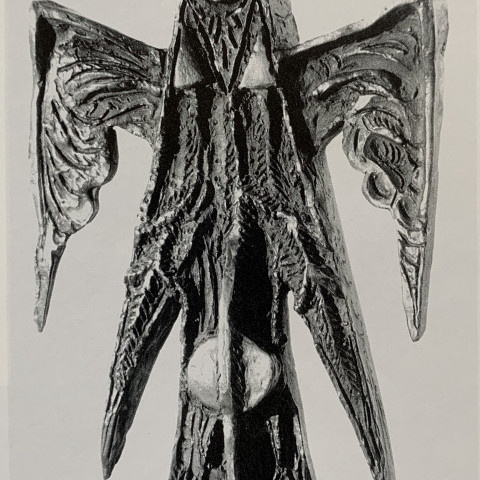Wifredo Lam was the youngest of nine children and the only son of a Chinese father and an Afro-Cuban mother. He was born in 1902 in Cuba. His father adhered to Confucius and Lao Tse, his mother raised him as a Roman Catholic. Had his godmother had her way, he would have become a Santeria priest-healer. He left Havana when he was twenty-one to study art in Madrid. There he was exposed to modernism: Surrealism, Picasso and Matisse.
In 1930, Lam married a Spanish woman, but a year later both his bride and their newborn son tragically succumbed to tuberculosis. He remained in Spain, fought with the Republicans during the Spanish Civil War. Injured, he was taken to a Catalonian hospital where he met a German chemist, Helena Holzer. Later they were married. In 1938, after being wounded while fighting for the Republican army during the siege of Madrid, he moved to Paris, where he established a lifelong friendship with Picasso. In 1940, with World War II and the internment by the Nazis of his wife, Lam fled with her to Marseilles and in 1941, boarded a ship back to Cuba.
In the Paris years, Lam has assimilated the Surrealist and Cubist vocabularies. Then, during the decade in Cuba, he fused the modernist elements with his Afro-Cuban heritage, forging his mature unique style.
In 1952, having divorced Helena, he moved permanently to Paris. His international reputation began to soar. In 1960 he married a Swedish artist with whom he had three sons. He supported Fidel Castro, and he enjoyed two tributes at the Museo de Belles Artes, in Havana. He died in 1982.
Source: askart.com

